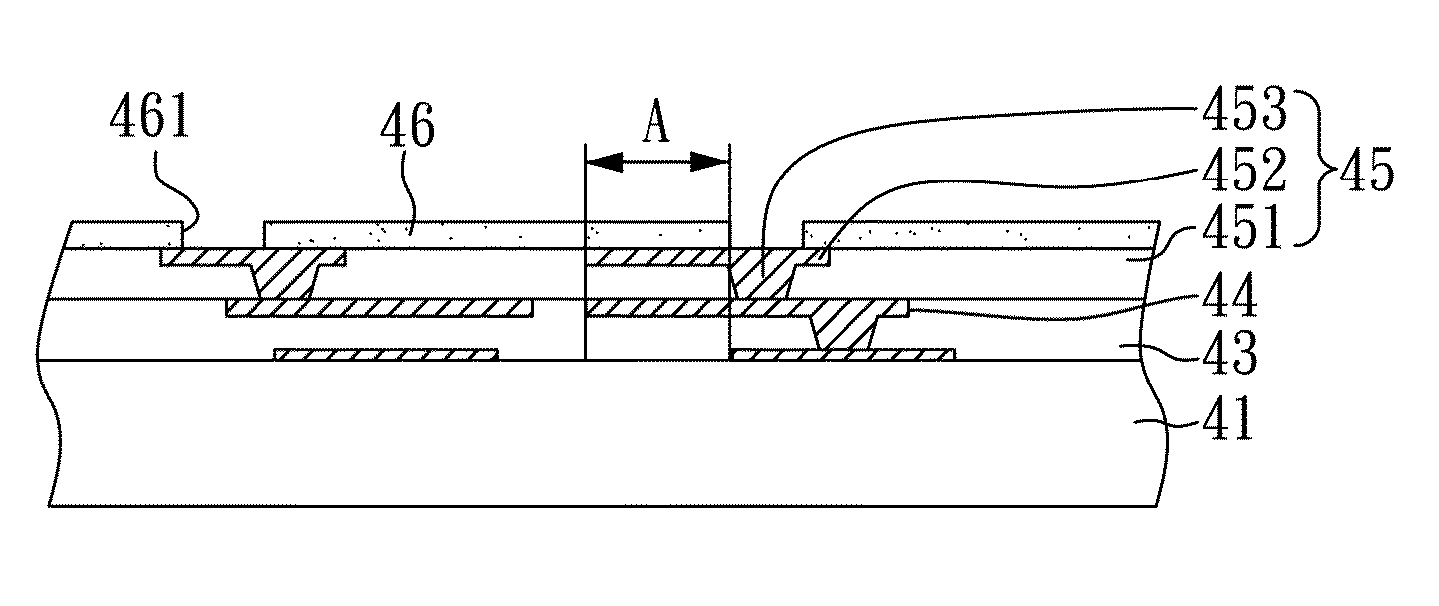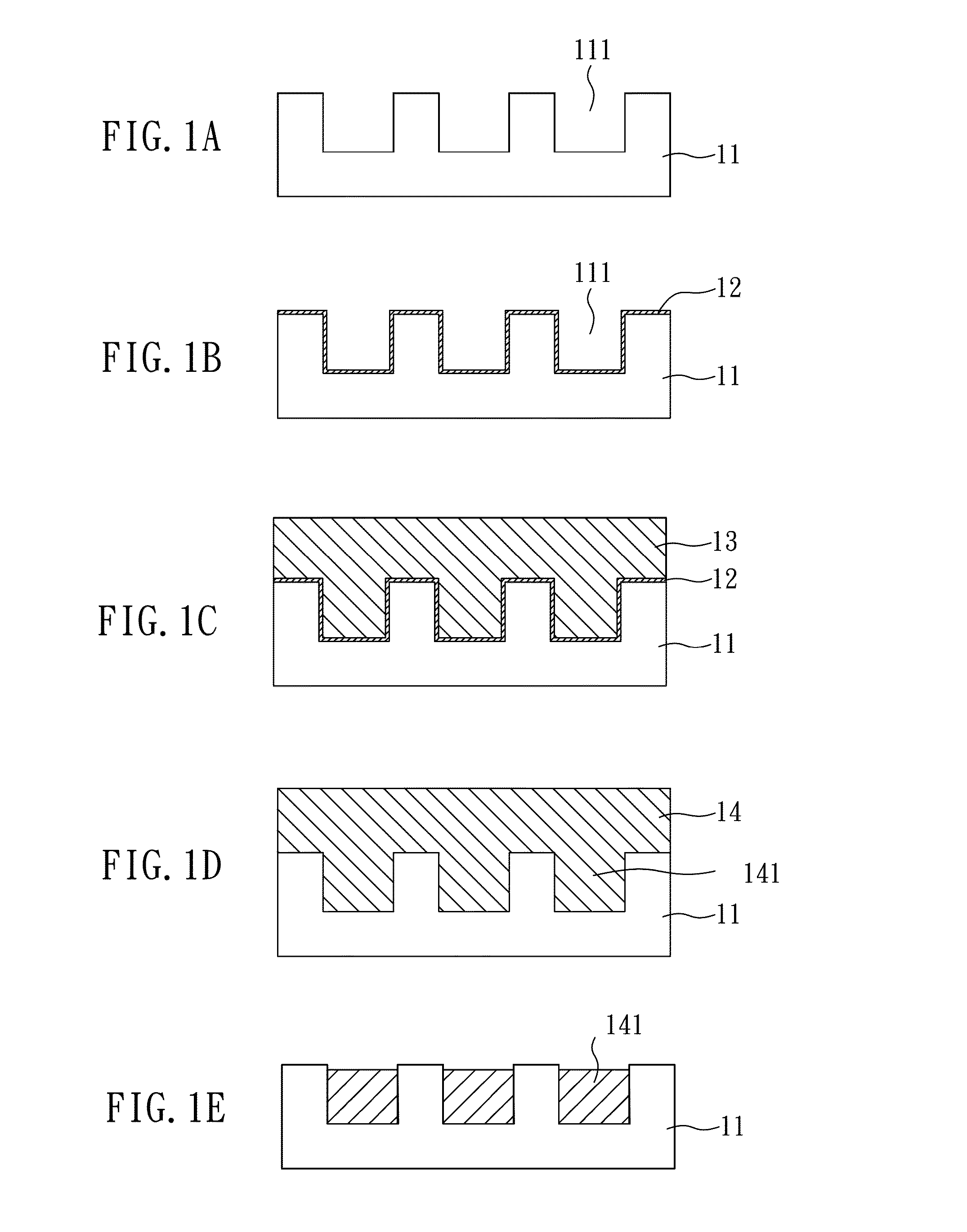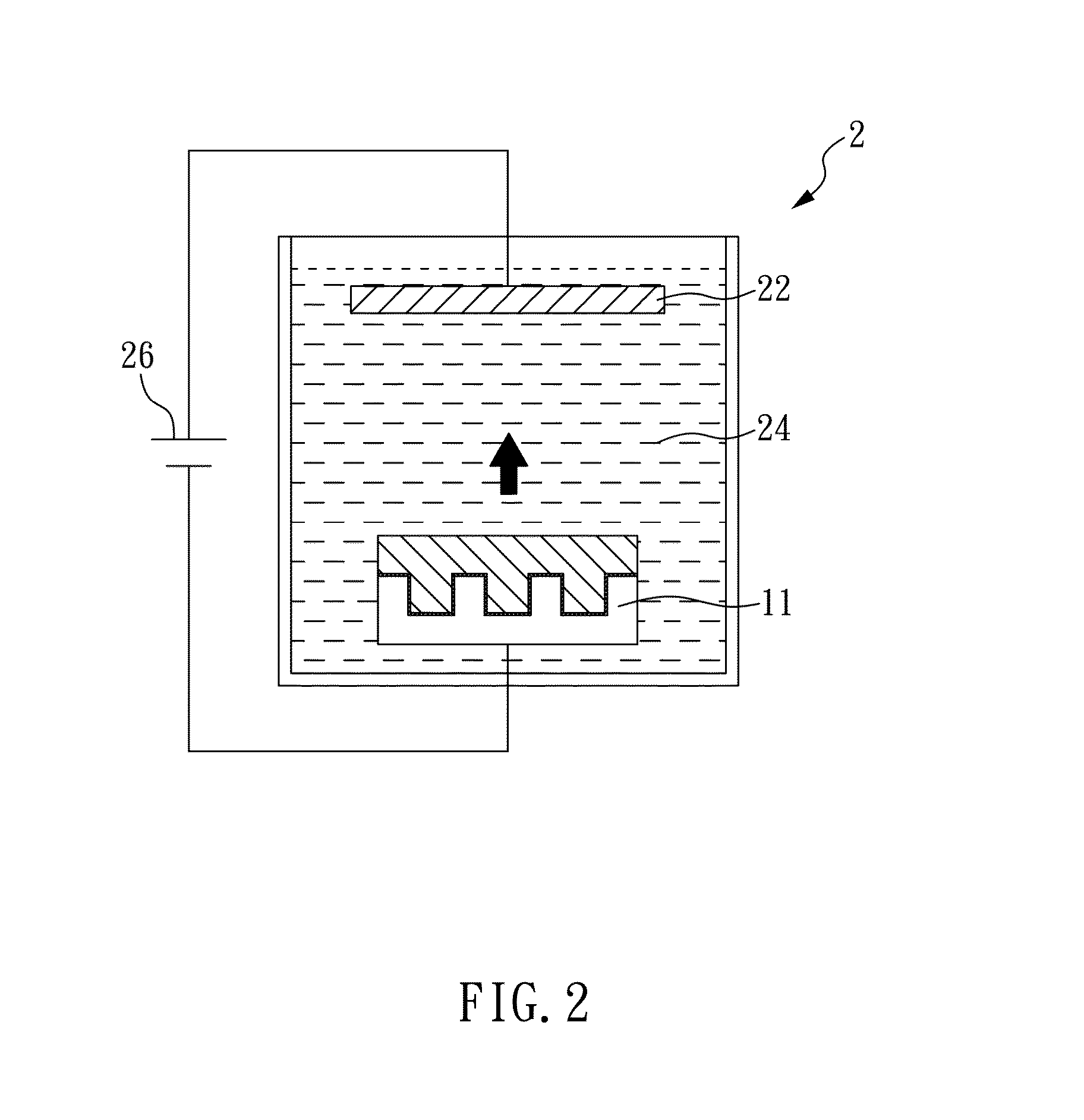Circuit board with twinned cu circuit layer and method for manufacturing the same
a technology of circuit layer and circuit layer, which is applied in the direction of electrical apparatus, semiconductor devices, semiconductor/solid-state device details, etc., can solve the problems of under-performing ability to resist electromigration, increasing manufacturing cost, and less noticeable value of actual application in reality, so as to reduce production cost, reduce production cost, and accelerate the effect of deposition rate and speed ra
- Summary
- Abstract
- Description
- Claims
- Application Information
AI Technical Summary
Benefits of technology
Problems solved by technology
Method used
Image
Examples
embodiment 1
[0032]FIGS. 1A to 1D are cross-sectional views of a process for manufacturing the copper circuit layer of the present embodiment. FIG. 2 is a schematic view of an electroplating device for forming copper circuit layer of the present embodiment.
[0033]As shown in FIG. 1A, the first step of the method is to provide a silicon substrate 11, on which a surface is disposed with multiple trenches 111, and the height and depth of the each trenches is 0.8 μm and 0.8 μm respectively. The next step is to use the electroplating device shown in FIG. 2 to carry out electroplating on the silicon substrate 11. As shown in FIG. 2, the silicon substrate is placed in an electroplating device 2 as a cathode; wherein, the electroplating device 2 comprises an anode 22, which is immersed in an electroplating solution 24 and connected to a direct current electrical power 26 (Keithley 2400 is used in this case). The materials used for anode 22 can be metal copper, phosphor bronze or insert anode (e.g. titani...
embodiment 2
[0041]FIGS. 4A to 4E are cross-sectional views of the process for preparing circuit board of the present embodiment.
[0042]FIG. 4A begins with first providing a substrate 31, for which at least a surface is disposed with a first circuit layer, the first circuit layer is used as an electric attachment pad 32. This pad may connect to the active devices in the substrate. In the current embodiment, the substrate 31 is a circuit board having multiple layers of circuit; which will be shown here in drawings only, without description of detailed structure. In addition, the electric attachment pad 32 of the first circuit layer is manufactured by the same method for making circuit layer for embodiment 1, and the pad has nano twinned copper structure.
[0043]And then as shown in FIG. 4B, the next step is to form a first dielectric layer 33 on at least one surface of the substrate 31. Then, by way of the manufacturing process commonly used in the present invention technical field, such as photolit...
embodiment 3
[0048]FIG. 5A to 5B are cross-sectional views of a process for preparing the circuit board of embodiment 3 according to the present invention.
[0049]As shown in FIG. 5A, the circuit board of the present invention comprises: a substrate 41, the surface of which has a first circuit layer, and the first circuit layer comprises an electrical attachment pad 42; a first dielectric layer 43, which is disposed on a surface of the substrate 41 and the first circuit layer; and a second circuit layer 44, which is formed on a surface of the first dielectric layer 43, the second circuit layer 44 comprises multiple first conductive vias 441 and a first circuit 442, the first conductive via 441 communicates and is electrically connected to the electrical attachment pad 42. Here, the manufacturing method and conditions for the substrate, first dielectric layer 43 and second circuit layer 44 are the same as for Embodiment 2, further elaboration will be omitted here.
[0050]Furthermore, a built-up circu...
PUM
 Login to View More
Login to View More Abstract
Description
Claims
Application Information
 Login to View More
Login to View More - R&D
- Intellectual Property
- Life Sciences
- Materials
- Tech Scout
- Unparalleled Data Quality
- Higher Quality Content
- 60% Fewer Hallucinations
Browse by: Latest US Patents, China's latest patents, Technical Efficacy Thesaurus, Application Domain, Technology Topic, Popular Technical Reports.
© 2025 PatSnap. All rights reserved.Legal|Privacy policy|Modern Slavery Act Transparency Statement|Sitemap|About US| Contact US: help@patsnap.com



